Voilà, la bête est officiellement annoncée, exactement le jour prévu par les rumeurs… En attendant de finaliser mon article, voici déjà le communiqué de presse de Canon France (dont j’ai coupé un peu le début sans intérêt)…
“Courbevoie, le 25 août 2016. Canon annonce aujourd’hui le lancement de l’EOS 5D Mark IV. Ce nouveau représentant de la famille des EOS 5D a été conçu pour les photographes en quête d’excellence ( … )
-
Capteur CMOS 30,4 millions de pixels avec grande plage dynamique
-
Autofocus CMOS à Double Pixel et format d’enregistrement RAW à Double Pixel
-
Enregistrement vidéo cinéma 4K avec mode DCI 4K jusqu’à 30p
-
Connectivité étendue grâce au Wi-Fi et au GPS intégrés, ainsi qu’à la fonctionnalité NFC
Le Canon EOS 5D Mark IV est ainsi doté d’un capteur CMOS de 30,4 millions de pixels, caractérisé par une grande plage dynamique, d’une rafale pouvant atteindre 7 images par seconde, de la possibilité d’enregistrement vidéo interne en 4K, du Wi-Fi et d’un GPS intégrés. Il est offre également des résultats exceptionnels en basse lumière et un potentiel inédit en vidéo.
L’EOS 5D Mark IV est le premier EOS à proposer le format de fichier RAW à Double Pixel, qui permet en post-production, d’ajuster ou de décaler légèrement la zone de netteté, ou de réduire les effets d’images fantômes et de reflets parasites, qui peuvent affecter les prises de vues en contre-jour.
D’autre part, Canon annonce également le lancement de deux nouveaux objectifs de la Série L : les zooms EF 24-105 mm f/4L IS II USM et EF 16-35 mm f/2.8L III USM.
| Canon EF 24-105mm f/4L IS II USM | ||
| OPTICAL FEATURES/SPECIFICATIONS | ||
| Image size | – | |
| 35mm film equivalent focal length (mm) | – | |
| Angle of view (horizontal, vertical, diagonal) | 74° – 19°20′, 53° – 13°, 84° – 23°20′ |
|
| Lens construction (elements/groups) | 17/12 | |
| No. of diaphragm blades | 10 | |
| Minimum aperture | 22 | |
| Minimum focussing distance (m) | 0.45 | |
| Maximum magnification (x) | 0.24 (at 105mm) | |
| Distance Information | Yes | |
| Image stabilizer | Yes, 4-stop | |
| AF actuator | Ring USM3 | |
| PHYSICAL SPECIFICATIONS | ||
| Dust/moisture resistance4 | Yes | |
| Filter diameter (mm) | 77 | |
| Max. diameter x length (mm) | 83.5 x 118 | |
| Weight (g) | 795 | |
| ACCESSORIES | ||
| Lens cap | E-77II | |
| Lens hood | EW-83M | |
| Lens case/pouch | LP1219 | |
| Rear cap | Lens Dust Cap E | |
| Magnification with Extension Tube EF12 II | 0.6 – 0.41 | |
| Magnification with Extension Tube EF25 II | 0.61 at Tele (Not compatible at Wide) | |
| Extender Compatibility | Not Compatible | |
| Other Accessories | Close up lens 500D, Gelatin Filter Holder IV | |
| 3 Full time Manual focus | ||
| 4 Lenses with dust/moisture resistance are fitted with a rubber ring on the lens mount which may cause slight abrasion of the camera mount. This in no way effects either the lens or camera performance. | ||
| Canon EF 16-35mm f/2.8L III USM | ||
| OPTICAL FEATURES/SPECIFICATIONS | ||
| Image size | – | |
| 35mm film equivalent focal length (mm) | – | |
| Angle of view (horizontal, vertical, diagonal) | 98° – 54°, 74°10′ – 38°, 108°10′ – 63° |
|
| Lens construction (elements/groups) | 16/11 | |
| No. of diaphragm blades | 9 | |
| Minimum aperture | 22 | |
| Minimum focussing distance (m) | 0.28 | |
| Maximum magnification (x) | 0.25 (at 35mm) | |
| Distance Information | Yes | |
| Image stabilizer | – | |
| AF actuator | Ring USM3 | |
| PHYSICAL SPECIFICATIONS | ||
| Dust/moisture resistance4 | Yes | |
| Filter diameter (mm) | 82 | |
| Max. diameter x length (mm) | 88.5 x 127.5 | |
| Weight (g) | 790 | |
| ACCESSORIES | ||
| Lens cap | E-82II | |
| Lens hood | EW-88D | |
| Lens case/pouch | LP1222 | |
| Rear cap | Lens Dust Cap E | |
| Magnification with Extension Tube EF12 II | 0.65 at Tele (Not compatible at Wide) | |
| Magnification with Extension Tube EF25 II | 1.14 at Tele (Not compatible at Wide) | |
| Extender Compatibility | Not Compatible | |
| Other Accessories | – | |
| 3 Full time Manual focus | ||
| 4 Lenses with dust/moisture resistance are fitted with a rubber ring on the lens mount which may cause slight abrasion of the camera mount. This in no way effects either the lens or camera performance. | ||
Canon présente l’adaptateur Wi-Fi W-E1, dédié aux reflex EOS 7D Mark II1, EOS 5DS1 et EOS 5DS R1 de Canon. Léger et très facile à transporter, il s’installe dans l’un des deux logements pour carte mémoire des boîtiers compatibles2. Il permet alors la visualisation immédiate des images sur une tablette ou un écran d’ordinateur, leur transfert vers les réseaux sociaux depuis un smartphone ou une tablette, et leur sauvegarde à distance. Il offrira également la possibilité de piloter les appareils à distance.
Grâce à l’adaptateur Wi-Fi W-E1, il est également possible de pratiquer la prise de vues à distance (jusqu’à 10 mètres), depuis un smartphone ou une tablette, via l’application Canon Camera Connect, ou depuis un ordinateur disposant de l’utilitaire EOS Utility. Très pratique pour les prises de vues de faune sauvage, pour la macro, ou pour une séance de prise de vues en studio, le pilotage à distance permet de contrôler l’appareil (réglage de l’exposition et de la mise au point), de déclencher, et de visualiser les images en temps réel. Principales caractéristiques de l’adaptateur Wi-Fi W-E1 :
- Pilotage à distance des boîtiers compatibles en Wi-Fi jusqu’à 10 m
- Contrôle permanent du cadrage par Live View à distance
- Transfert des images vers un smartphone, une tablette ou un ordinateur
- Format carte SD : très facile à transporter
- Connexion directe ou via un réseau existant.
| Wi-Fi Adapter W-E1 | ||
| Wi-Fi Adapter type | Image transfer adapter compatible with IEEE802.11b, IEEE802.11g, IEEE802.11n Wireless LAN | |
| Wi-Fi Adapter design | SD Card (without internal memory) | |
| Compatible cameras | EOS 7D Mark II1, EOS 5DS1, EOS 5DS R1 | |
| WI-FI FUNCTIONS | ||
| Communication with smartphones | Images can be viewed, controlled, and received using a smartphone Remote control of the camera using a smartphone |
|
| Remote operation using EOS Utility | Remote control functions and image viewing functions of EOS Utility can be used wirelessly | |
| COMMUNICATION | ||
| Connecting Software | EOS Utility (for PC and Mac) Canon Camera Connect App (for compatible Android and iOS devices) |
|
| Supported file formats for transfer | JPEG, MP4 | |
| NFC connection | Not supported | |
| Max. number of connections | 1 | |
| WIRELESS LAN | ||
| Standards compliance | IEEE 802.11b IEEE 802.11g IEEE 802.11n |
|
| Transmission range | Approx. 10m | |
| Transmission frequency | 2412 to 2462 MHz / Channels: 1 to 11 ch | |
| Wireless LAN configuration methods | Wi-Fi Protected Setup (WPS) PIN code |
|
| Connection methods | Camera access point mode / Infrastructure (IEEE 802.11n/11b/11g) | |
| Encryption | WEP, TKIP, AES | |
| Signal strength display | Indicated on a scale of one to four on the rear LCD panel of cameras, in an antenna icon | |
| PHYSICAL SPECIFICATIONS | ||
| Dimensions | 24.0 × 32.0 × 2.1mm | |
| Weight | 2g | |
| Operating Environment | 0 – 40 °C, 85% or less humidity | |
| [1] Firmware update required | ||
Enfin, Canon lance la toile de protection PC-E1 qui permet de protéger rapidement le matériel photo”.

Voici les prix TTC conseillés et disponibilités des produits annoncés ci-dessus :
- Canon EOS 5D Mark IV : 4099.99 € le 08 septembre 2016
- Canon EF 16-35mm f/2.8L III USM : 2649.99 € le 1er novembre 2016
- Canon EF 24-105mm f/4L IS II USM : 1269.99 € le 1er novembre 2016
- Canon Grip BG-E20 : 409.99 € le 08 septembre 2016
- Adaptateur Wi-Fi W-E1 : 49.49 € courant octobre (à confirmer)
- Toile de protection PC-E1 : 30.49 € courant octobre (à confirmer)
Quelques visuels des menus, proposés dans l’ordre (cliquez sur la flèche de droite pour passer à la suivante et explorer les onglets comme vous le feriez sur l’appareil) :
Fiche technique complète :
|
Canon EOS 5D Mark IV |
||
| IMAGE SENSOR | ||
| Type | 36 x 24 mm CMOS | |
| Effective Pixels | Approx. 30.4 megapixels | |
| Total Pixels | Approx. 31.7 megapixels | |
| Aspect Ratio | 3:2 | |
| Low-Pass Filter | Built-in/Fixed | |
| Sensor Cleaning | EOS integrated cleaning system | |
| Colour Filter Type | Primary Colour | |
| IMAGE PROCESSOR | ||
| Type | DIGIC 6+ | |
| LENS | ||
| Lens Mount | EF (excludes EF-S / EF-M lenses) | |
| Focal Length | Equivalent to 1.0x the focal length of the lens | |
| FOCUSING | ||
| Type | TTL-secondary image-forming phase-difference detection system with dedicated AF sensor | |
| AF System/ Points | 61 Point / max of 41 cross-type AF points inc 5 dual cross type at f/2.8 and 61 points / 21 cross-type AF points at f/8 (11) The number of cross-type AF points will differ depending on the lens. |
|
| AF working range | EV -3 – 18 (at 23°C & ISO100) | |
| AF Modes | One Shot AI Focus AI Servo AF |
|
| AF Point Selection | Automatic selection: All 61 point AF (based on EOS iTR AF setting) Manual selection: Single point AF (selectable points 61, 15, 9 or cross type only points selectable) Manual selection: Single point Spot AF Manual selection: AF point Expansion 4 points (up, down, left, right) Manual selection: AF point Expansion surrounding 8 points Manual selection: Zone AF (all AF points divided into 9 focusing zones) Manual selection: Large Zone AF (all AF points divided into 3 focusing zones) AF points can be selected separately for vertical and horizontal shooting |
|
| Selected AF point display | Transparent LCD in viewfinder and shown on Quick Control screen | |
| AF Lock | Locked when shutter button is pressed half way or AF ON is pressed in One Shot AF mode. Using customised button set to AF stop in AI servo | |
| AF Assist Beam | Emitted by an optional dedicated Speedlite | |
| Manual Focus | Selected on lens | |
| AF Microadjustment | Manual: Enter adjustment +/- 20 steps (wide and tele setting for zoom lenses) Adjust all lenses by same amount Adjust up to 40 lenses individually Adjustments remembered for lens by serial number |
|
| EXPOSURE CONTROL | ||
| Metering modes | Approx. 150,000-pixel RGB+IR metering sensor, 252-zone metering. EOS Intelligent Subject Analysis system (1) Evaluative metering (linked to All AF point) (2) Partial metering (approx. 6.1% of viewfinder at centre) (3) Spot metering: Center spot metering (approx. 1.3% viewfinder at centre) AF point-linked spot metering not provided (4) Centre weighted average metering |
|
| Metering Brightness Range | EV 0 – 20 (at 23°C, ISO100, with evaluative metering) | |
| AE Lock | Auto: In the One-Shot AF mode with evaluative metering, AE lock takes effect when focus is achieved Manual: By AE lock button in P, Av, Tv and M modes |
|
| Exposure Compensation | +/-5 EV in 1/3 or 1/2 stop increments (can be combined with AEB). | |
| AEB | +/-3 EV in 1/3 or 1/2 stop increments | |
| Anti-flicker shooting | Yes. Flicker detected at a frequency of 100 Hz or 120 Hz. Maximum continuous shooting speed may decrease | |
| ISO Sensitivity (8) | Auto 100-32000 (in 1/3-stop or whole stop increments) ISO can be expanded to L:50, H1: 51200, H2: 102400, |
|
| SHUTTER | ||
| Type | Electronically-controlled focal-plane shutter | |
| Speed | 30-1/8000 sec (1/2 or 1/3 stop increments), Bulb (Total shutter speed range. Available range varies by shooting mode) | |
| Shutter Release | Soft touch electromagnetic release | |
| WHITE BALANCE | ||
| Type | Auto white balance with the imaging sensor | |
| Settings | AWB (Ambeince priority/White priority), Daylight, Shade, Cloudy, Tungsten light, White Fluorescent light, Flash, Custom, Colour Temperature Setting White balance compensation: 1. Blue/Amber +/-9 2. Magenta/ Green +/-9 |
|
| Custom White Balance | Yes, 1 setting can be registered | |
| WB Bracketing | +/-3 levels in single level increments 3, 2, 5 or 7 bracketed images per shutter release Selectable Blue/Amber bias or Magenta/ Green bias |
|
| VIEWFINDER | ||
| Type | Pentaprism | |
| Coverage (Vertical/Horizontal) | Approx. 100% | |
| Magnification | Approx. 0.71x(4) | |
| Eyepoint | Approx. 21mm (from eyepiece lens centre) | |
| Dioptre Correction | -3 to +1 m-1 (dioptre) | |
| Focusing Screen | Fixed, with information Transparent LCD overlay | |
| Mirror | Quick-return half mirror | |
| Viewfinder Information | AF information: Single/Spot AF points, AF Frame, AF status, Focus indicator, AF mode, AF point selection, AF point registration Exposure information: Shutter speed, aperture value, ISO speed (always displayed), AE lock, exposure level/compensation, flash metering, spot metering circle, exposure warning, AEB, metering mode, shooting mode Flash information: Flash ready, high-speed sync, FE lock, flash exposure compensation, red-eye reduction light Image information: Card information, maximum burst (2 digit display), Highlight tone priority (D+), JPEG/RAW indicator, Dual Pixel RAW, Digital Lens Optimizer Composition information: Grid, Electronic level Other information: Battery check, Warning symbol, Flicker Detection, drive mode, white balance |
|
| Depth of field preview | Yes, with Depth of Field preview button | |
| Eyepiece shutter | On strap | |
| LCD MONITOR | ||
| Type | 8.10cm (3.2″) Clear View LCD II, approx. 1620K dots | |
| Coverage | Approx. 100% | |
| Viewing Angle (horizontally/vertically) | Approx 170° vertically and horizontally | |
| Coating | Anti-reflection and Anti-smudge. Reinforced glass incorporated | |
| Brightness Adjustment | Manual: Adjustable to one of seven levels Color Tone Adjument: 4 settings |
|
| Touch-screen operations | Capacitive method with menu functions, Quick Control settings, playback operations, and magnified display. AF point selection in Live View and Movies, touch shutter is possible in Live View still photo shooting | |
| Display Options | (1) Quick Control Screen (2) Camera settings (3) Dual Axis Electronic Level (4) Custom Quick Control Screen |
|
| FLASH | ||
| Modes | E-TTL II Auto Flash, Metered Manual | |
| X-sync | 1/200sec | |
| Flash Exposure Compensation | +/- 3EV in 1/3 increments with EX series Speedlites | |
| Flash Exposure Bracketing | Yes, with compatible External Flash | |
| Flash Exposure Lock | Yes | |
| Second Curtain Synchronisation | Yes | |
| HotShoe/ PC terminal | Yes/ Yes | |
| External Flash Compatibility | E-TTL II with EX series Speedlites, wireless multi-flash support | |
| External Flash Control | via camera menu screen | |
| SHOOTING | ||
| Modes | Scene Intelligent Auto, Program AE , Shutter priority AE, Aperture priority AE, Manual (Stills and Movie), Bulb and Custom (x3) | |
| Picture Styles | Auto, Standard, Portrait, Landscape, Fine Detail, Neutral, Faithful, Monochrome, User Defined (x3) | |
| Colour Space | sRGB and Adobe RGB | |
| Image Processing | Highlight Tone Priority Auto Lighting Optimizer (4 settings) Long exposure noise reduction High ISO speed noise reduction (4 settings) Lens optical correction (3): – Peripheral illumination correction, Chromatic aberration correction (during/after still photo shooting, during Video only) – Distortion correction, Diffraction correction, Digital Lens Optimizer (during/after still photo shooting) Resize to M, S1, S2 or S3 (6) Cropping: JPEG images can be cropped (Aspect ratios 3:2, 4:3, 16:9, 1:1) – 45 cropping sizes selectable, from 11% to 95% (diagonal) – Switch between vertical and horizontal cropping orientation – Cropping frame can be moved using touch screen operation RAW image processing (7) Multiple exposure |
|
| Drive modes | Single, Continuous High, Continuous Low, Silent Single, Silent Continuous High, Silent Continuous Low, Self timer (2s+remote, 10s+remote) | |
| Continuous Shooting | Max. Approx. 7fps. with full AF / AE tracking, speed maintained for up to unlimited number of JPEGs or 21 RAW images (1) (2) (10) Max. 4.3fps in Live View mode with AF Tracking |
|
| Interval timer | Built-in, number of shots selectable from 1-99 or unlimited (Selectable interval time – 1sec to 99hr 59mins 59sec). Bulb timer possible (Selectable time – 1sec to 99hr 59mins 59sec) | |
| LIVE VIEW MODE | ||
| Type | Electronic viewfinder with image sensor | |
| Coverage | Approx. 100% (horizontally and vertically) | |
| Frame Rate | 29.97 fps (may increase when AF is performed) | |
| Focusing | Manual Focus (Magnify the image 5x or 10x at any point on screen) Autofocus: Dual Pixel CMOS AF (Face Detection and Tracking AF, FlexiZone – Single, FlexiZone – Multi), available with all EF lenses and Touch shutter |
|
| Metering | Real-time evaluative metering with image sensor (315-zone) Partial metering (approx. 6.3% of Live View screen) Spot metering (approx. 2.7% of Live View screen) Center-weighted average metering Active metering timer can be changed |
|
| Display Options | 4 levels available through INFO. button: No information, Basic shooting information, Advanced shooting information and Advanced shooting information with Histogram Multiple Exposure status also avaible in Multiple Exposure mode |
|
| FILE TYPE – Stills | ||
| Still Image Type | JPEG: 3 compression options RAW: RAW, M-RAW, S-RAW and Dual Pixel RAW (14bit, Canon original RAW 2nd edition) Complies with Exif 2.30 and Design rule for Camera File system 2.0 Complies with Digital Print Order Format [DPOF] Version 1.1 |
|
| RAW+JPEG simultaneous recording | Yes, any combination of RAW + JPEG possible, separate formats to separate cards possible including Dual Pixel RAW +JPEG | |
| Image Size | JPEG: 3:2 ratio (L) 6720×4480, (M1) 4464×2976, (S1) 3360×2240 , (S2) 1696×1280 , (S3) 640×480 4:3 ratio (L) 5952×4480, (M1) 3968×2976, (S1) 2976×2240 , (S2) 1920×1280 , (S3) 720×480 16:9 ratio (L) 6720×3776, (M1) 4464×2512, (S1) 3360×1888 , (S2) 1920×1080 , (S3) 720×408 1:1 ratio (L) 4480×4480, (M1) 2976×2976, (S1) 2240×2240 , (S2) 1280×1280 , (S3) 480×480 RAW: (RAW) 6720×4480, (M-RAW) 5040×3360, (S-RAW) 3360×2240 |
|
| Folders | New folders can be manually created and selected | |
| File Numbering | (1) Consecutive numbering (2) Auto reset (3) Manual reset |
|
| EOS MOVIE | ||
| Movie Type | MOV Video: 4K (17:9) 4096 x 2160 – Motion JPEG (internal recording only), Full HD, HD – MPEG4 AVC / H.264 variable (average) bit rate, Audio: Linear PCM MP4 Video: Full HD (16:9) 1920 x 1080 – MPEG4 AVC/H.264, Audio: AAC |
|
| Movie Size | 4K (17:9) 4096 x 2160 (29.97, 25, 24, 23.98 fps) Motion JPEG Full HD (16:9) 1920 x 1080 (59.94, 50, 29.97, 25, 23.98 fps) intra or inter frame (13) Full HD (16:9) 1920 x 1080 HDR ( 29.97, 25 fps) inter frame (13) Full HD (16:9) 1920 x 1080 (29.97, 25) lite inter frame HD (16:9) 1280 x 720 (119.9, 100 fps) intra frame |
|
| Colour Sampling (Internal recording) | 4K – YCbCr4:2:2 (8 bit) Full HD/ HD – YCbCr4:2:0 (8 bit) |
|
| Movie Length | 4K and Full HD – Max duration 29min 59sec. (excluding High Frame Rate movies). No 4GB file limit with exFAT CF card | |
| High Frame Rate Movie | MOV Video: HD – 1280 x 720 at 100fps or 119.9fps Recorded as 1/4-speed slow motion movie Single scene maximum recording up to 7min 29sec. |
|
| 4K Frame Grab | 8.8 megapixel JPEG still image frame grab from 4K movie possible | |
| Bitrate / Mbps | MOV: 4K (29.97p/25.00p/24.00p/23.98p): Approx. 500 Mbps Full HD (59.94p/50.00p)/ALL-I: Approx. 180 Mbps Full HD (59.94p/50.00p)/IPB Approx. 60 Mbps Full HD (29.97p/25.00p/24.00p/23.98p)/ALL-I: Approx. 90 Mbps Full HD (29.97p/25.00p/24.00p/23.98p)/IPB (Standard): Approx. 30 Mbps HD (119.9p/100.0p)/ALL-I: Approx. 160 Mbps MP4: Full HD (59.94p/50.00p)/IPB (Standard): Approx. 60 Mbps Full HD (29.97p/25.00p/24.00p/23.98p)/IPB (Standard): Approx. 30 Mbps Full HD (29.97p/25.00p)/IPB (Light): Approx. 12 Mbps |
|
| Microphone | Built-in monaural microphone (48Khz, 16 bit x 2 ch) | |
| HDMI Display | External monitor only, External Monitor only without information display or Simultaneous on camera and external monitor | |
| HDMI Output | Full HD recording only, uncompressed YCbCr 4:2:2, 8-bit, sound output via HDMI is also possible | |
| Focusing | Dual Pixel CMOS AF with Face Detection and Tracking AF, Movie Servo AF Manual Focus |
|
| ISO | 4K – Auto: 100-12800, H: 25600, H: 32000, H1: 51200, H2: 102400, Full HD / HD – Auto: 100-25600, H: 32000, H1: 51200, H2:102400 |
|
| BUILT-IN GPS | ||
| Geotag Information | Longitude, Latitude, Elevation, Coordinated Universal Time | |
| Positioning Modes | Mode 1: Camera continues to receive GPS signals at regular intervals when power is switched off Mode 2: GPS is switched off when power is switched off |
|
| Position Update Timing | Intervals of 1 sec., 5 sec., 10 sec., 15 sec., 30 sec., 1 min., 2 min. or 5 min. |
|
| Position Accuracy | Within approx. 30 m/98.4 ft (Based on good GPS satellite reception conditions on a clear day with no surrounding obstructions) | |
| Compatible Satellite Navigation Systems | • GPS satellites (USA) • GLONASS satellites (Russia) • Quasi-Zenith Satellite Michibiki (Japan) |
|
| Log Files Format | NMEA Format. One log file per day based | |
| Log File Usage | Transfer log data to memory card and copy it to a computer Use Map Utility to append the log file to the images |
|
| Digital Compass | Not provided | |
| OTHER FEATURES | ||
| Custom Functions | 17 Custom Functions with 46 settings | |
| Metadata Tag | User copyright information (can be set in camera) Image rating (0-5 stars) IPTC data (registered with EOS Utility) Image transfer with caption (Caption registered with EOS Utility) |
|
| LCD Panel / Illumination | Yes / Yes | |
| Water/ Dust resistance | Yes | |
| Voice Memo | No | |
| Intelligent Orientation Sensor | Yes | |
| Playback zoom | 1.5x – 10x in 15 steps | |
| Display Formats | (1) Single image (2) Single image with information (2 levels ) Basic – Shooting information (shutter speed, aperture, ISO and Image quality) Detailed – Shooting information (shutter speed, aperture, ISO, metering Image, quality and file size), Lens information , Brightness and RGB histogram, White balance, Picture Style, Color space and noise reduction, Lens optical correction, GPS information (3) 4 image index (4) 9 image index (5) 36 image index (6) 100 image index (7) Jump Display (1, 10 or 100 images, Date, Folder, Movies, Stills, Protected images, Rating) (8) Movie edit (9) RAW processing (10) Rating |
|
| Slide Show | Image selection: All images, by Date, by Folder, Movies, Stills, Protected images or Rating Playback time: 1/2/3/5/10 or 20 seconds Repeat: On/Off |
|
| Histogram | Brightness: Yes RGB: Yes |
|
| Highlight Alert | Yes | |
| Image Erase | Single image, Selected images, Folder, Card | |
| Image Erase Protection | Erase protection of Single image, Folder or Card | |
| Self Timer | 2 or 10 sec. | |
| Menu Categories | (1) Shooting menu 1 – 6 (2) AF Menu 1 – 5 (3) Playback menu 1 – 3 (4) Setup menu 1 – 5 (5) Custom Functions menu 1 – 5 (6) My Menu (1 – 5 user selectable) |
|
| Menu Languages | 25 Languages English, German, French, Dutch, Danish, Portuguese, Finnish, Italian, Norwegian, Swedish, Spanish, Greek, Russian, Polish, Czech, Hungarian, Romanian, Ukrainian, Turkish, Arabic, Thai, Simplified Chinese, Traditional Chinese, Korean and Japanese |
|
| Firmware Update | Update possible by the user (Camera, Lens, WFT, External Speedlite) | |
| INTERFACE | ||
| Computer | SuperSpeed USB 3.0 | |
| WiFi | Wireless LAN (IEEE802.11b/g/n), (2.4 GHz only), with Dynamic NFC support [12] Features supported – FTP/FTPS, EOS Utility, SmartPhone, Upload to Web , Wireless printing | |
| Other | HDMI mini out (Type C, HDMI-CEC compatible), External Microphone In / Line In (Stereo mini jack), Headphone socket (Stereo mini jack), N3-type terminal (remote control terminal) | |
| DIRECT PRINT | ||
| PictBridge | Yes (Via Wireless LAN only) | |
| STORAGE | ||
| Type | 1x CompactFlash Type I (UDMA 7 compatible) (Incompatible with Type II and Microdrive) 1x SD/SDHC/SDXC and UHS-I |
|
| SUPPORTED OPERATING SYSTEM | ||
| PC & Macintosh | Windows 7 (excl. Starter Edition) Windows 8 and Windows 10 OS X v10.7-10.11 |
|
| SOFTWARE | ||
| Image Processing | Digital Photo Professional 4.5 or later (RAW Image Processing) | |
| Other | EOS Utility 3.5 or later (inc. Remote Capture ), Picture Style Editor, Map Utility, EOS Lens Registration Tool, EOS Web Service Registration Tool, Canon Camera connect app (iOS/ Android) | |
| POWER SOURCE | ||
| Batteries | Rechargeable Li-ion Battery LP-E6N (supplied) / LP-E6 | |
| Battery life | Approx. 900 shots (at 23°C) (5) Approx. 850 (at 0°C) |
|
| Battery Indicator | 6 levels + percentage | |
| Power saving | Power turns off after 1, 2, 4, 8, 15 or 30mins | |
| Power Supply & Battery Chargers | Battery charger LC-E6E (supplied), Battery charger LC-E6, AC Adapter AC-E6N and DC Coupler DR-E6, AC Adapter Kit ACK-E6N/ACK-E6, Car Battery Charger CBC-E6 | |
| PHYSICAL SPECIFICATIONS | ||
| Body Materials | Magnesium Alloy body and polycarbonate with glass fiber Prism cover | |
| Operating Environment | 0 – 40 °C, 85% or less humidity | |
| Dimensions (WxHxD) | 150.7 x 116.4 x 75.9mm | |
| Weight (body only) | Approx. 890 g | |
| ACCESSORIES | ||
| Viewfinder | Eyecup Eg, Eg-series Dioptric Adjustment Lens with Rubber Frame Eg, Anti Fog Eyepiece Eg, Angle Finder C | |
| Wireless File Transmitter | Wireless File Transmitter WFT-E7B | |
| Lenses | All EF lenses (excluding EF-S / EF-M lenses) | |
| Flash | Canon Speedlites (90EX, 220EX, 270EX, 270EX II, 320EX, 380EX, 420EX, 430EX, 430EX II, 430EX III 550EX, 580EX, 580EX II, 600EX, 600EX-RT, 600EX-II-RT, Macro-Ring-Lite MR-14EX, Macro Ring Lite MR-14EX II, Macro Twin Lite MT-24EX, Speedlite Transmitter ST-E2, Speedlite Transmitter ST-E3-RT) | |
| Remote Controller/ Switch | Remote control with N3 type contact, Wireless Controller LC-5 and Speedlite 600EX-II-RT | |
| Other | BG-E20 battery grip, Hand Strap E2, Connect Station CS100 | |
| 1 Large/Fine resolution | ||
| 2 Based on Canon’s testing conditions, JPEG, ISO 100, Standard Picture Style. Maximum fps and buffer capacity may be reduced depending on the cameras settings, light level, subject, memory card brand and capacity, image recording quality, ISO speed, drive mode, Picture Style, Custom functions etc. | ||
| 3 Not possible with M-RAW and S-RAW | ||
| 4 with 50mm lens at infinity, -1m-1 dpt | ||
| 5 Viewfinder shooting. Based on the CIPA Standard and using the battery supplied with the camera, except where indicated | ||
| 6 Frame grab images from 4K movies and images shot in S3 quality cannot be resized | ||
| 7 RAW image processing during image Playback only with RAW and Dual Pixel RAW only | ||
| 8 Recommended Exposure Index | ||
| 10 Figures quoted are when used with UDMA 7 Compact flash memory card | ||
| 11 The number of AF points, cross-type AF points, and dual cross-type AF points vary depending on the lens used | ||
| 12 Wi-Fi use may be restricted in certain countries or regions | ||





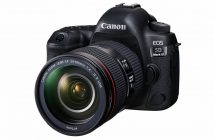
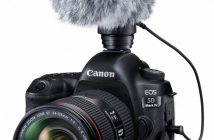
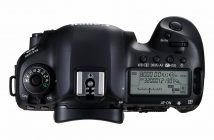
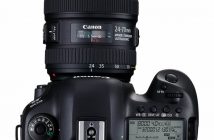
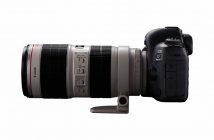

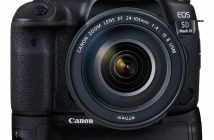

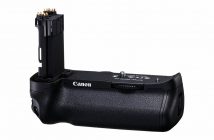


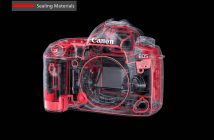
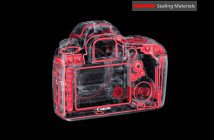

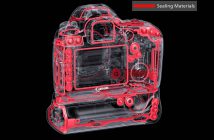
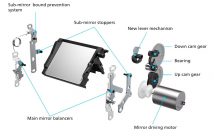
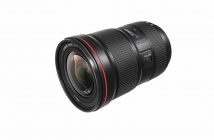
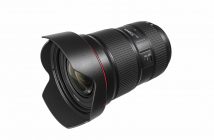
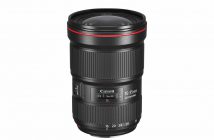
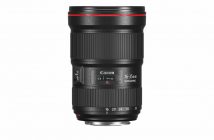
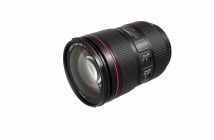

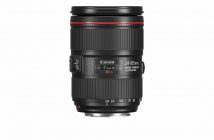
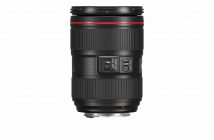


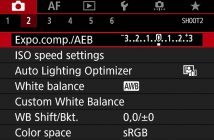
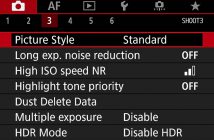
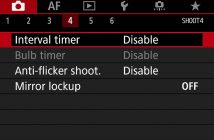

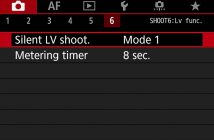
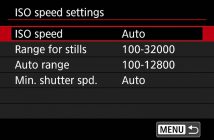
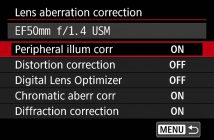

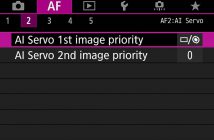
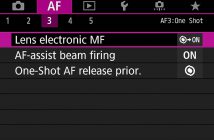
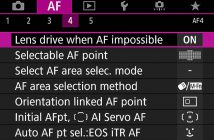
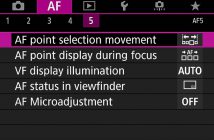
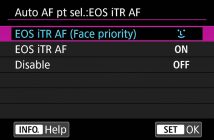
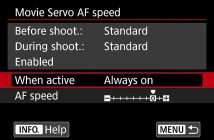

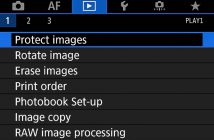

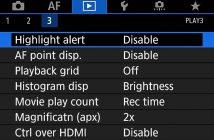
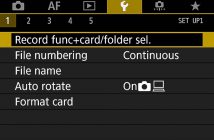

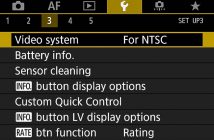
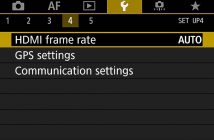
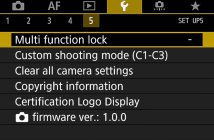

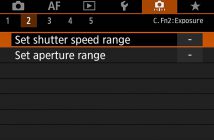

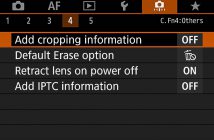
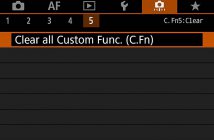
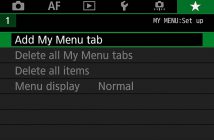
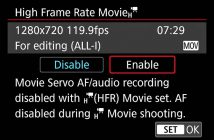
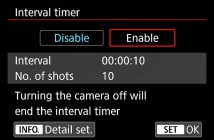

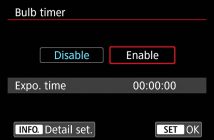
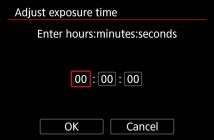
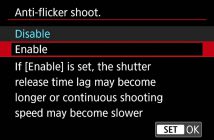
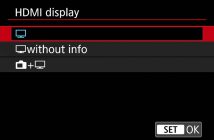
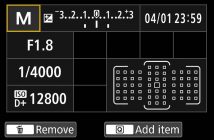
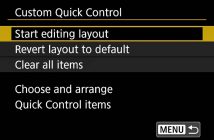


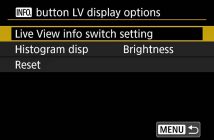
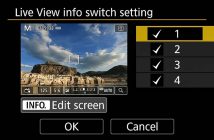
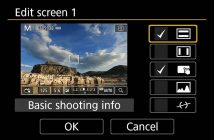
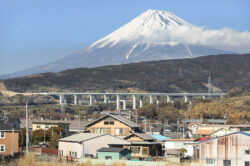
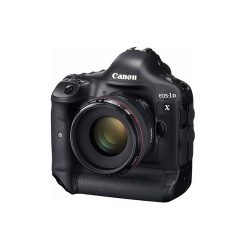
Bon moi, j’attends le 5DmkV, vous savez celui qui aura l’écran inclinable ^^
Oui, ça c’est con…
c’est vrai ;-)
Effectivement ; on se demande bien pourquoi Canon bloque à ce point bêtement sur les écrans orientables. Du moins sur leurs boitiers 24X36. S’ils continuent dans cette voie cela vas finir par leur porter préjudice par rapport à la concurrence. Enfin espérons qu’il ne vont pas réitérer cette erreur sur le prochain 6D MK2 !!.
Oui, celui-ci sera en face du Nikon D750 : écran orientable verticalement obligatoire… (et pas de coté façon EOS 80D, espérons ! )
Bonjour à tous et à toutes,
Concurrence, non même ci j’aimerai avoir un écran inclinable à la place du Wifi ça va pas leur porté concurrence, car le seul boîtier pro semi pro est le Nikon 810 qui n’a pas d’écran orientable.
Moi c’est le prix sur le quel je bloque mais bon dans un an il sera à 3500 € et puis franchement c’est le 5ds qui me branche le plus en lieu et place de 5d mk3 car apurés le teste il m’a vraiment convainques.
Donc voir les résultats des premiers tests su 5dmk4.
Je précise je ne fais pas de vidéo
A+
ppb
Sauf erreur de ma part, le prix des Canon ne baissent pas tant que ça.
Le 5D4 sera à 3500€ dans… 4 ans, en fin de vie.
Bon ben il ne sera pas mien, toujours pas de mesure spot lié au collimateur d’AF.
A 4100€ je pense pouvoir trouver un 1DX d’occasion pour moins cher. le 5dsR c’est 3800€ et les 1DX2 c’est 6200€.
Le mode d’AF est celui du 1DX2 pour les collimateurs, mais la série 1D a un processeur dédié ce que n’as pas les 5D. Pour le mesure de lumière et l’ITR c’est le module du 7DMK2.
La vidéo j’ai du faire 20mn en 3 ans pour tester sur le 5DMK3 et 0 avec le 7DMK2.
Plutôt déçu, mais pas étonné.
Pour l’écran orientable, je pense à la fragilité sinon il te faut une charnière costaud et là c’est encombrement qui en prends un coup. Si tu regarde l’intérieur des boitiers FF comme les 5D, il n’y a pas de place libre, donc charnière extérieure. Vu comme je secoue mes boitiers quand je fais des photos au bords de piste, j’aimerais pas à avoir un truc qui pends que je risque d’arracher ou fausser.
Pentax a bien sorti le K1 avec un écran orientable, et visiblement le mécanisme est en béton armé, pratiquement increvable. A voir sur la durée, mais Pentax n’est pas une boîte d’amateurs niveau solidité de leurs boîtiers (c’est même leur point fort).
Bonjour,
Je me trompe peut-être mais le Canon EF 16-35mm f/2.8L III USM passe de + ou – 1500€ à 3649 €… ?????
Bonjour,
Le prix annoncé par DP-Review en $ pour le boîtier seul est moins élevé que celui annoncé plus haut, 3499 $ ! Aussi peu vraisemblable a priori, pour moi, que les 4099 €.
Compte tenu du positionnement de ce boîtier, je pencherais pour un prix très proche de celui du 5Ds, autour de 3700/3800 €.
Aucune mention de l’affichage des collimateurs, il y a t’il un retour en arrière comme pour le 1Dx Mk II ?
Les prix en $ sont HT donc ajoute 20% et le prix est similaire :)
Kevin, tu as raison, le prix aux USA est effectivement HT, je l’avais oublié, mais il n’y a pas de TVA aux States, seulement une taxe locale, pour NY c’est 8,375 %, ce qui donne un montant arrondi de 3800 $.
Je pense qu’un prix supérieur à celui des 5Ds risque de ne pas être très bien compris, mais le raisonnement des services marketing est souvent obscur ! En tous cas, cela représente une jolie somme et le différentiel de prix par rapport à la série 1 est devenu moins important avec le temps.
Disons que lorsque l’on aura vu en action l’EOS 5 D MkIV, on comprendra peut-être mieux l’augmentation du prix !
Patience…
Vraiment très cher… à moins de performances stratosphériques, vu que les 5Dsr/5D3 font déjà très bien le job pour du plein format, je doute qu’il se vende autant de palettes de 5D4 que de 5D3… même en tenant compte du fait que le marché n’est plus autant composé de primo-accédants au plein format.
Le pire dans tout ça, c’est que Nikon est bien parti pour devenir low-cost en terme de boîtiers plein format :D
Un 5D4 au prix d’un A7R II… ça devient plus si désavantageux pour Sony, cette inflation.
Ce qui me choque vraiment (et là le terme n’est pas galvaudé), c’est ces ridicules 21 images de buffer en RAW. Ils ont fumé quoi pour proposer un buffer rachitique dans un reflex pro ? Le meilleur moyen de rater une image c’est pas l’AF moyen c’est le buffer…
Je comprends bien que faut pas couper l’herbe sous le pied des propriétaires de 1Dx II, mais là c’est du beau foutage de gueule (et une belle leçon de segmentation de gamme, même Nikon n’aurait pas osé).
le buffer lui-même n’est peut-être pas, “beaucoup plus court” qu’avant…
Par contre, vu la cadence en augmentation et la résolution en augmentation, le nombre d’image et leur poids augmentent beaucoup.
D’ou le chiffre de 21 images.
Emballé par ce 5D4, JF ?
je n’ai pas encore eu trop le temps d’y penser…
Je suis un peu surpris par le prix. Mais il est peut-être justifié…
On le saura en examinant les fichier RAW… ET notamment les Dual Pixels RAW !
Oui mais les DPRAW ne pourront etre developpés que via PPP. Donc adieu le workflow avec LR , à moins que tu aies des news de LR7…
Je suppose que le changement de mise au point ne sera pas supporté (pas immédiatement en tous cas), par Lightroom… Lorsque l’on aura besoin de l’ajuster, on passera par Canon DPP.
Mais si l’on excepte cette exploitation de changement de focus, pourquoi Lightroom ne pouvait-il pas lire les dpRAW ?
On verra ;-)
Bonjour
Pour le prix le problème n’est pas la qualité du produit c’est le positionnement tarifaire et le portefeuille de chaque photographe, bientôt Canon vas se prendre pour Leica et seule les J-M B et autre Carl pourrons se les payer, la majorité des 1DX sont acheté par des agences, la ligné des 5D et plus utilisés par des indépendants.
Canon depuis 2012 à augmenter les tarifs de prés de 30% sur ces nouveaux produits.
Cela viens de 2 facteurs: positionnement voulue et moins de ventes qu’il faut compensées.
le petit souci c’est que augmenter ses tarif c’est aussi diminuer ses ventes, un vieux problèmes commercial.
Sauf bien sur si le produit est exceptionnel aux s’il il existe une rupture technologique, la pas de rupture donc il reste le produit exceptionnel à voir, ne pas oublier que le Nikon 810 affiche 36 MPx pour 3200 €
A+
Il faut comprendre aussi que de plus en plus de photographes pro qui n’utilisaient que les gammes EOS 1… sont passés progressivement aux gammes EOS 5D.
Ce qui a conduit Canon à monter en gamme cette série EOS 5D, appelée de plus en plus à remplacer les EOS 1D dans le sac des professionnels.
Ne pas oublier que en contre partie : les appareils haute de gamme APS-C et l’EOS 6D qui est apparu entre temps (accessibles financièrement comme l’EOS 80D) sont désormais capables de performances professionnels… Oui ils en font de plus en plus !
Ces derniers (EOS 6D) tendent de plus en plus à remplacer ce que représentait l’EOS 5D en 2005…
Ne pas oublier qu’un EOS 6D quand il est sorti était (à peu près) aussi performant que l’EOS 5D MkII. Il l’a plus ou moins remplacé dans la gamme… Normal que cette série EOS 5D monte en gamme.
Si vous le trouvez troop cher : c’est que c’est un EOS 6D MkII qu’il vous faut ! patience…
yes !!
Asssez sidèré par cette augmentation significative des tarifs chez Canon…
Il faut voir que l’Euro a significativement baissé par rapport au Yen, entre 2008 et aujourd’hui ;-)
On ne peut donc pas trop se plaindre de Canon… Mais plutôt de “l’appauvrissement” relatif des Européen, depuis que l’on a découvert que notre devise était totalement surévaluée…
http://www.zonebourse.com/EURO-JAPANESE-YEN-EUR-4592/graphiques-comparatif/
La J-F il est vrai que notre devise à pris un coup mais les produit technologiques sont plus tos positionnés en fonction du marché local et je reste persuadé que Canon est sur de son produit et de l’engouement du marché européen l’Allemagne aligne le même tarif. Pour l’Angleterre la balance avec la Livre est trop importante pour que ça ne joue pas un peut et puis au lancement Canon est toujours plus chers que le prix constaté 6 moi plus tard. Si Canon se rend compte du besoin de réajuster son tarif il le feront.
Ou alors le 6d Mk2 aura l’AF du 80D avec 28 ou 30mp sans la nouvelle gestion des raw mais une machine plus attirante que le 5d MK3 quand ils auront épuisé les stokes de celui ci avec écran orientable.
ce qui créera une gamme logique 2000 €, 3700 3800 € et 7000 € pour le plein format capable de répondre à beaucoup d’attente .
Le 6D a peu près aussi performant que le 5D mark 2 JF ???? J’ai eu les 2, et le 6D est mieux, à tous les niveaux !
( A moins que tu ne parlais du mark3…)
Et là, le 6D n’est pas minable face au MkIII
Oui, d’accord avec ça : l’EOS 6D est un peu mieux (et plus ergonomique) que l’EOS 5D MkII…
Ce dernier garde de petits avantages (mais pas beaucoup) : il vaut mieux un EOS 6D en effet !
Explosion des tarifs des boîtiers…
J’avais payé mon 5D mk II, il a plus de 7 ans, 2100eu, neuf, je précise !
L’équivalent de l’EOS 5D MkII est actuellement l’EOS 6D : on le trouve neuf à 1600 €…
Il est meilleur, plus léger et dispose de meilleurs optiques (comme le Ef 24-70 mm f/4 L IS USM, qui n’existait pas à l’époque et qui n’est pas cher).
Conclusion : dans l’absolu (en qualité absolue), on a bien mieux pour beaucoup moins cher en 2016 qu’en 2008…
Bien d’accord avec Jean-François pour le 6D, j’ai acquis celui-ci et le 24-70 (en lisant vos articles et commentaires…) il y a un an et j’en suis toujours ravi et surpris ! Il n’a pas tant vieilli que ça…:D, merci donc ! Plus sérieusement le 24-105 à bien augmenté lui aussi : /.
C’est le paradoxe des gammes, Canon à introduit le 6d donc effectivement le positionnement de 5d à évolué et comme le 5d MK4 est le premier 5d poste 6d li est plus chers. Mais les Photographes sont resté avec l’idée suivante pour du matériel pro
7d et 7dmk2 en APSC alors que le 80d est plus performant que le 7d
5d 5dlmk2 mk3 et mk4 alors q’un 6d est plus préformant que le 5d2
De toute façon la on Canon à vraiment modifier ça gamme c’est avec le 1dx et le 5Dsr car avant
on avait des plein format 1ds 1ds2 et 1ds3 et des sport 1d2 et 1d3 APSH qui dessiné le parc très PRO
avec un boiter identique mais deux utilisations différentes.
avec l’introduction du 5dsr Canon à mélange sa gamme pro sur 3 format de capteur et 2 forma de boîtier.
Et pour avoir un 50 Mpx il faut débourser 3750 € avant pour 1DS MK3 de 20 MPX il fallait déboursé 7850 €
On avait juste oublier que le 5mk2 avait cassé les prix .
Moi perso ça me conviens juste qu ‘effectivement les 2 vaisseaux amiral de la flotte Canon sont forcement plus chers.
Et j’attendrai de voir comment ça va évoluer pour voir quand je renouvelle mon matos.
Belle journée à tous le monde
Bizarre ! Dans les specs de la nouvelle carte wifi canon W-E1 il est indiqué:
COMMUNICATION / Supported file formats for transfer / JPEG, MP4
Et les RAW ??? (vérifié idem sur sites canon GB, DL)